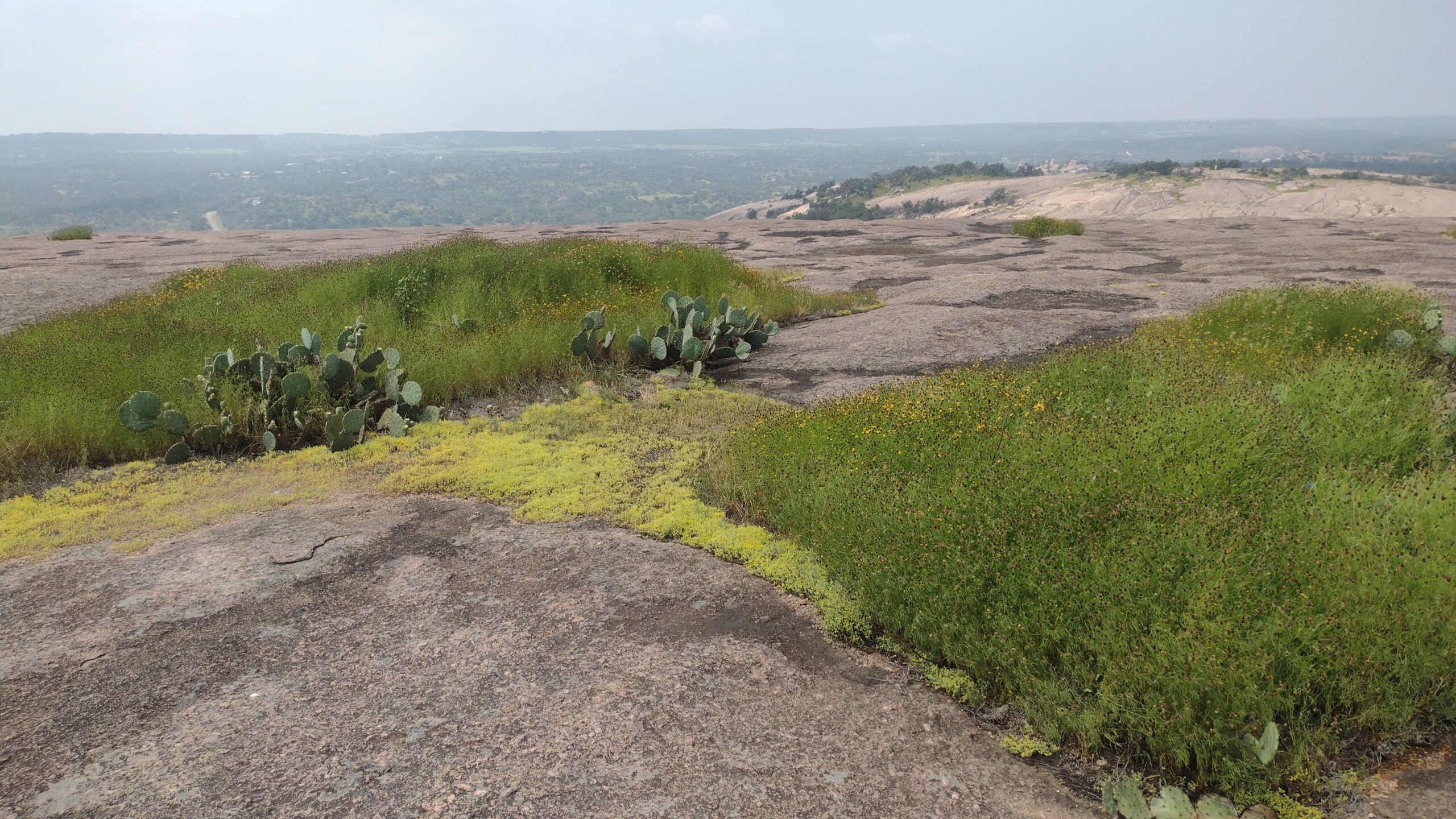
The stagnant, hot, humid conditions over the weekend led to very hazy conditions in Central Texas over the weekend. The haze obscured distant skylines and natural features, turned the sky white, and generally contributed to the unpleasantness of the extremely hot conditions.
The haze was also a visual reminder of the degraded air quality we had in Central Texas. The Air Quality Index on Monday was 89, which is considered on the elevated side of the safe range, with potential threats to sensitive groups like the very young, the elderly, and those with respiratory conditions like asthma.
The primary component in haze is ozone. You may have heard of ozone as the good molecule in the stratosphere that protects us from ultraviolet radiation. And it is. Ozone in the stratosphere is good ozone. Ozone close to the surface is not good ozone. It is a respiratory irritant and causes cellular damage to plants, which can impact the productivity of plant agriculture.
We get ozone close to the surface by a chemical reaction that happens when oxides of nitrogen (NOx) and volatile organic compounds (VOCs) interact with free oxygen in the atmosphere (O2) and sunlight. NOx and SO2 come from a variety of sources, but two of the big ones are industry and the burning of fossil fuels. This is one reason we usually associate smog with cities. Cities are where we have those three air pollutants in large quantities due to industrial activities, electrical generation, and transportation.
The conditions we had over Memorial Day weekend in much of Texas were ideal for the formation of smog – hot temperatures, clear skies, low winds, and lots of humidity.
I noticed the serious haze conditions when I was at Enchanted Rock State Natural Area with my family over Memorial Day Weekend. The familiar view of the granite domes you see as you approach the park entrance was badly obscured by haze, to the point where the domes looked like ordinary hills in the distance, not smooth, granite domes.
The National Parks Conservation Association reports that 97% of National Parks deal with air quality problems like visibility issues, health impacts, and threats to nature. Since most parks are located far from large population centers, these air quality issues come from pollutants that are transported by the atmospheric circulation. The best way to clean up the air in parks is to reduce the emission of air pollutants at the source, in our cities.
In the early summer, one contributor to haze in central and southern Texas is agricultural fires in Mexico which release smoke that can be transported to Texas. VOCs in smoke interact with molecules in the air to form ozone in hot, sunny conditions, which makes the sky look hazy. But we also get haze all year from local sources like vehicle emissions, fossil fuel-fired electrical generation, and industrial activity. Smog is a persistent problem in Texas cities.
The key to reducing smog and keeping our Texas landscapes beautiful is to reduce the concentrations of the pollutants that lead to the formation of smog. Federal air quality standards like the Clean Air Act, which includes the new National Ambient Air Quality Standards (NAAQS), the Methane Rule announced this fall by the EPA, vehicle emissions standards, the Bureau of Land Management’s new methane rule, the Good Neighbor Rule, and the new coal fired power plant emission standards are all designed to reduce the concentrations of smog-causing air pollutants in the atmosphere.
All of these federal programs have made a big difference in our air quality, making our cities more beautiful and safer places for people to live. I am grateful for the rigorous science that goes into crafting effective air quality policy and support continued common sense improvements as we learn more about the sources of air pollution, like methane leaks. Given the rapid growth of Texas’s industrial sector, I am happy knowing that we have strong federal air quality regulations that require companies to limit their emissions.
If you feel the same way, one way to engage is to let your state senator know that you support strong air quality regulations in advance of the upcoming “Overcoming Federal Incompetence” hearing scheduled for June 13 in the Texas Senate’s Interim Charges. Let your senators know that robust federal air quality policy benefits all of us by keeping Texas skies beautiful and ensuring safe air for all of us to breathe.
